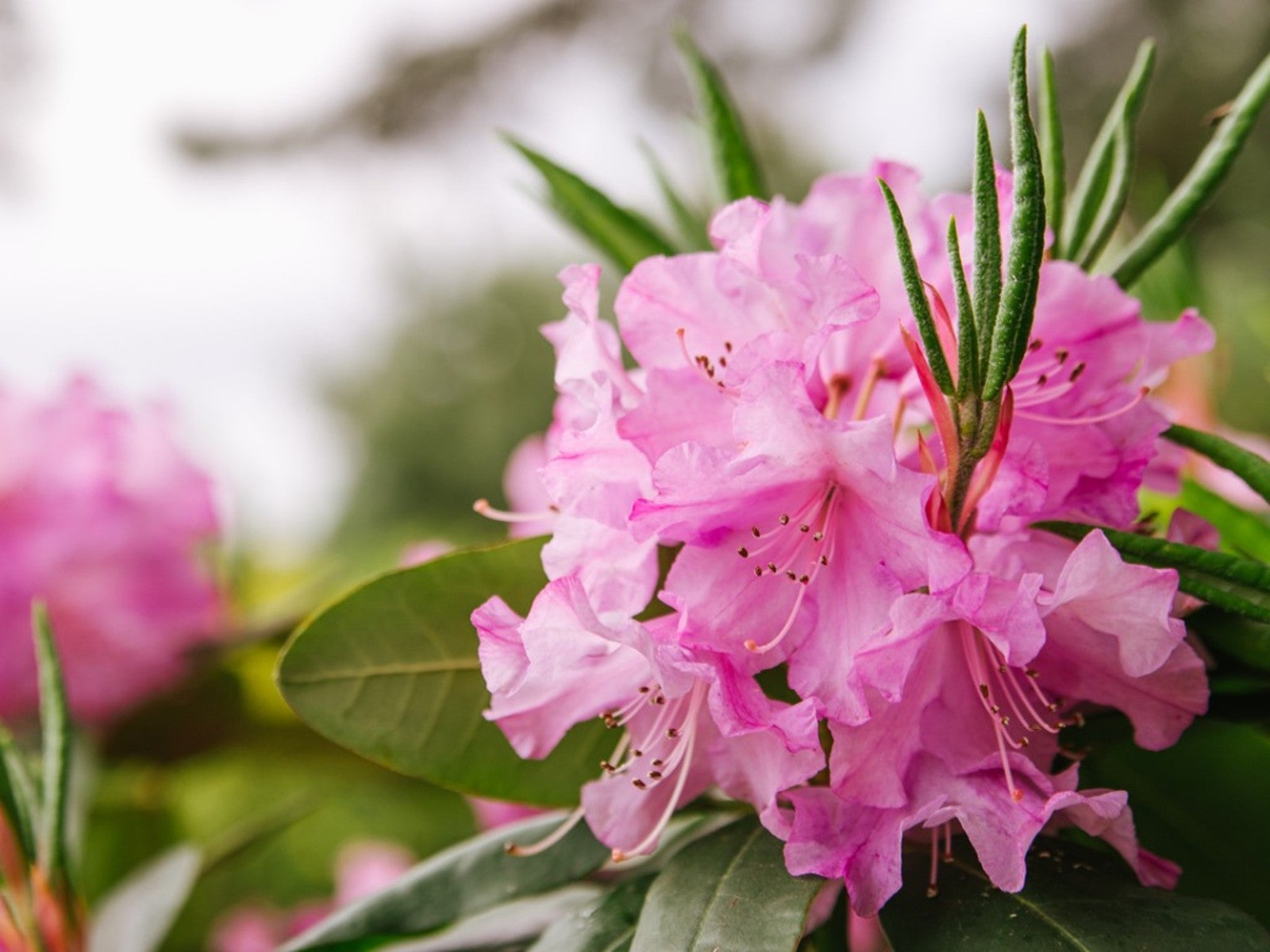How Curling Leaves On Rhododendrons Act Like A Thermometer


Do you ever look at your plant leaves to tell the temperature outside? You could, if you have rhododendrons, and people have been doing it for over a century. When the weather drops, you’ll see your rhododendron leaves curling - and yes, it’s a real phenomenon called “thermotropic” leaf movements. Read on for all the details.
Leaves Curling on Rhododendron
Whether you have rhodies in your garden or not, you likely know what the leaves look like. Normally, rhododendron leaves are flat and extend horizontally from the plant. But when temperatures dip significantly in winter, you may see those leaves coiled and hanging like dark green beans, as one gardener expressed it.
That this happens is indisputable. As early as the 1800s, scientists noticed this phenomenon and tried to understand it. Why do the leaves droop and curl in the cold, as if they were hugging themselves? Even today, many gardeners wonder the same thing. And many theories have been forwarded.
Theories About Leaf Curl on Rhododendrons
Many potential reasons have been proposed for cold weather causing curling rhododendron leaves. But almost all of them have been discounted or disproved.
One theory was that this leaf reorientation was nature’s way of reducing snow load on this broadleaf evergreen. The proponents suggested that if the rhodie leaves remained outstretched, the snow buildup could break branches. However, it turns out that a substantial amount of snow can accumulate on the branches of these plants regardless of leaf position and without doing the plant any harm.
Another theory was that rhododendrons curled leaves in order to reduce water loss. When the leaves droop and curl, they could be upping the humidity of the air around their leaves and lowering their risk of desiccation. However, rhododendron do not open their stomata during the colder months, so there is no net transfer of water into or out of the leaves in winter.
Explanation for Leaf Curl in Rhododendrons
The current theory for why rhododendrons curl their leaves in winter involves separate reasons for the two different movements: leaf curling and leaf droop. Leaf curling, where the edges curl and cup inward, happen when temperatures dip below freezing. The latest thinking is that this helps to protect the vulnerable underside of the leaves by blocking them from the cold air with the waxy cuticle of the upper side of the leaves.
Sign up for the Gardening Know How newsletter today and receive a free copy of our e-book "How to Grow Delicious Tomatoes".
Leaf droop involves a change in the angle at which the leaf is positioned. This doesn’t occur at freezing, but at a lower temperature, around 25 degrees F. This is when the foliage is most vulnerable to irradiation. Sunscald is more dangerous to rhododendron species in winter than in summer, since during their growing season, they are protected from the sun and temperature extremes by a deciduous canopy.
However, this protection is gone in winter. The leaf cell membranes that handle photosynthesis are particularly vulnerable and can be permanently damaged. When the plant lowers its leaves to a vertical position, it reduces both excess cold and light.
This all means that rhododendron leaves curl and droop in the cold. Next time temperatures drop, take a look at your rhododendron and see for yourself.

Teo Spengler is a master gardener and a docent at the San Francisco Botanical Garden, where she hosts public tours. She has studied horticulture and written about nature, trees, plants, and gardening for more than two decades, following a career as an attorney and legal writer. Her extended family includes some 30 houseplants and hundreds of outdoor plants, including 250 trees, which are her main passion. Spengler currently splits her life between San Francisco and the French Basque Country, though she was raised in Alaska, giving her experience of gardening in a range of climates.